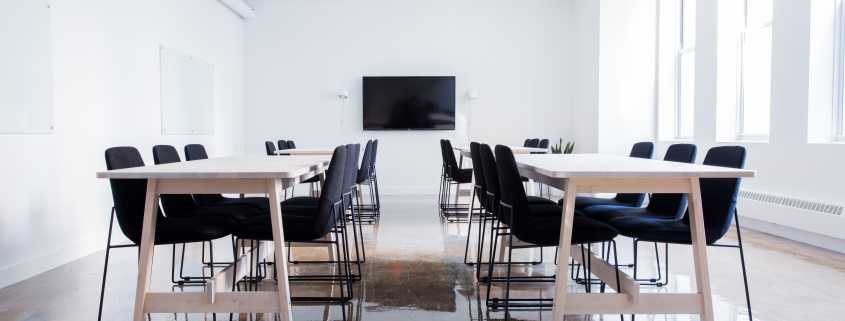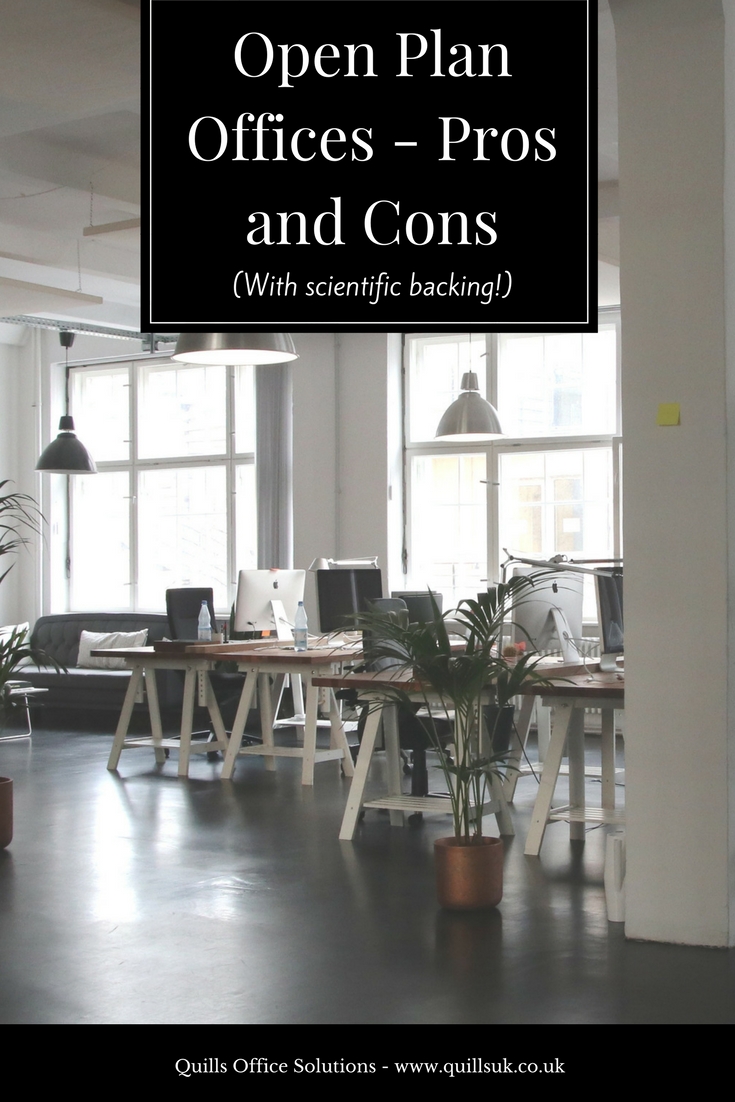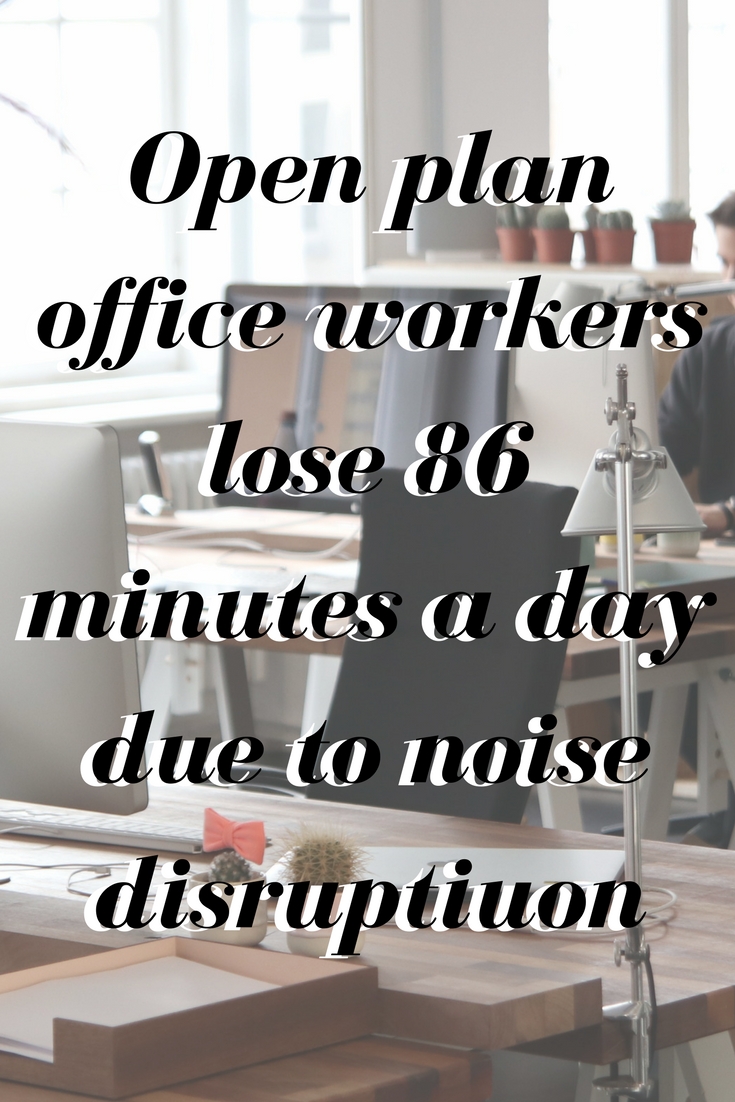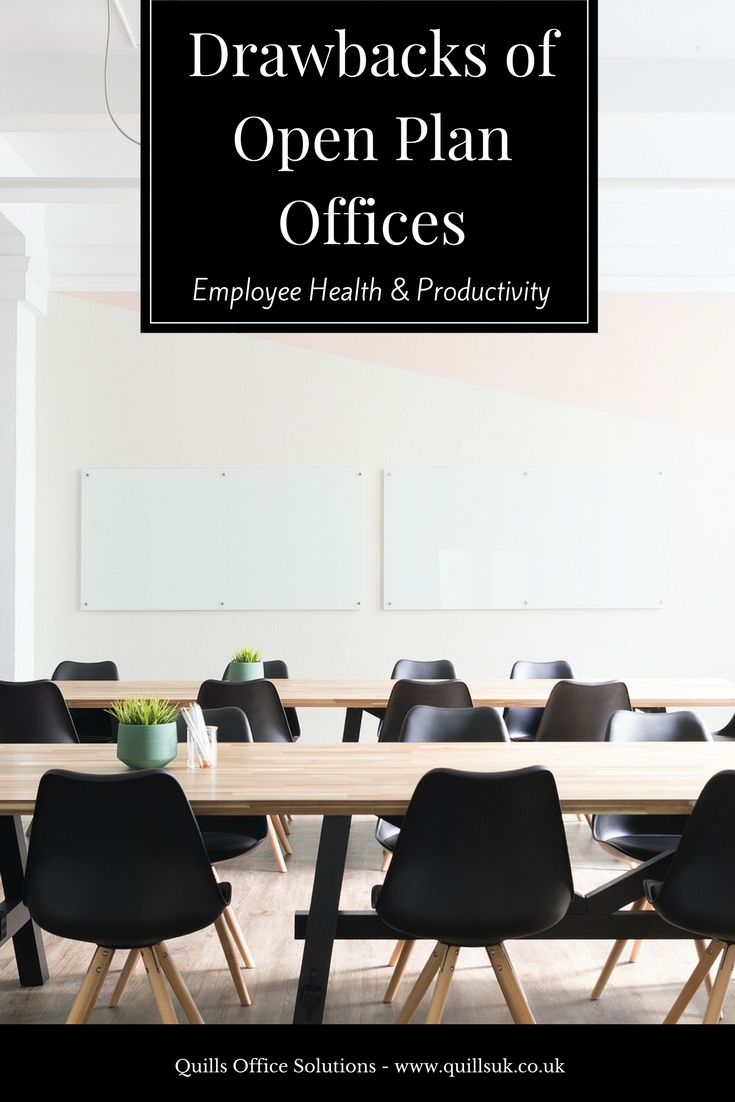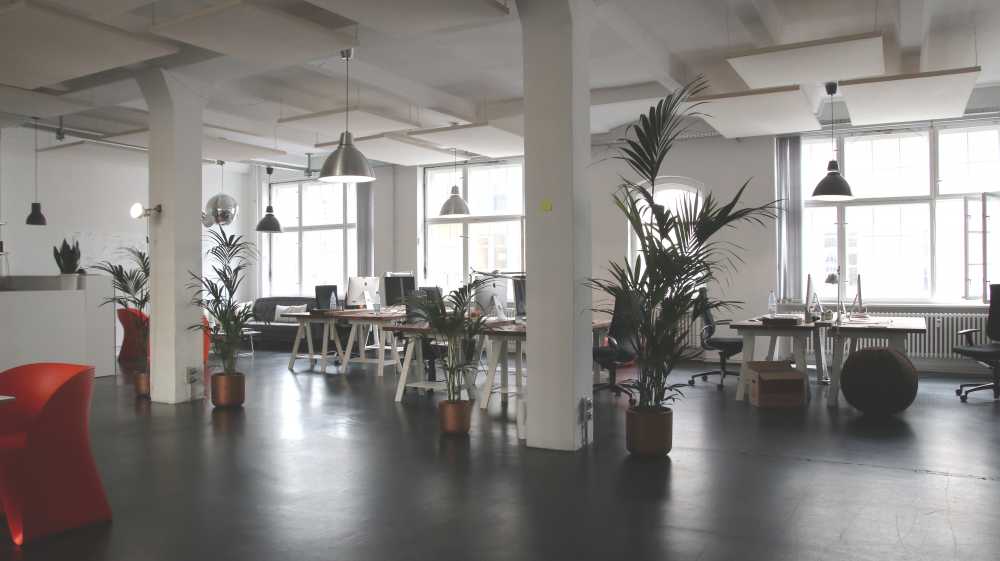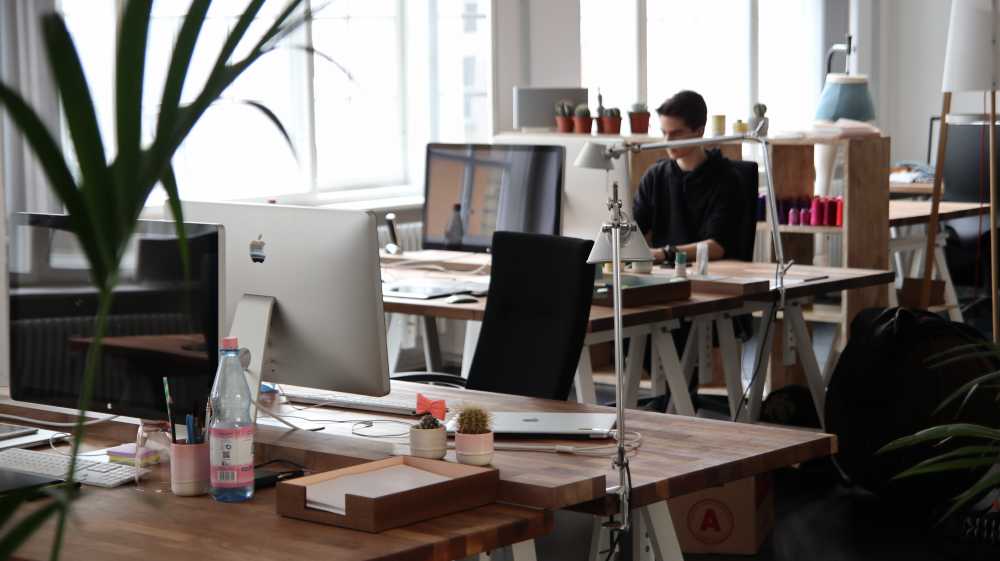The Negative Impacts Of The Open Office – Open Offices: The REAL Drawbacks & Benefits
The open office is the trend that changed the landscape of the workplace – the trend that became the new normal. A recent survey has shown that nearly 70% of office workers are now working in open space offices. However, there is one thing this trend doesn’t have?
Open offices apparently have no scientific backing, in fact, most scientific studies into the open plan office have drawn negative conclusions. Open plan offices have been shown to be unhealthy, they lower employee satisfaction and actually decrease productivity.
International studies from Ipsos and the Workspace Futures Team of Steelcase have shown that 85% of people are dissatisfied with their working environment and can’t concentrate.
**Part 2 of this series: The Benefits Of Open Offices is now live; make sure you read that post too**
That being said . . . a few years ago, open offices were all the rage. Open offices were claiming to increase productivity, employee happiness, creativity and collaboration. People were sold the idea that open offices would fix everything wrong with the traditional office.
As with all trends, a pinch of salt is always a good idea. The truth in all likelihood lies somewhere in between. Open offices may not be all good – but they probably aren’t all bad either.
In this two-part post series, we’re going to be investigating the open office, taking a look at all the statistics and identifying the real benefits and drawbacks, instead of the the hype. Our first post will identify the negative aspects to the open office and our second will highlight the benefits. We hope you find all the following information useful.
Negatives Of Open Plan Offices
Too much noise
One of the most immediate drawbacks of an open plan office is the noise. At any given time, an open plan office probably has music playing, employees talking and people on the phone – minimum. Not to mention background noise such as typing, the sound of printing, noise from the surrounding area, etc.
Studies have shown that employees lose as much as 86 minutes a day due to noise distractions.
While all noise is distracting to workers and harms productivity, the worst kind of noise for concentration is actually the most common type in an open space office – intermittent speech.
Intermittent speech is when you hear bits and pieces of a conversation, a sentence here and there. It’s incredibly common in an office – when your coworkers have a conversation; when someone answers the phone and you only hear one side of the conversation; when people are talking outside the office door and you hear snippets of the conversation.
Studies show that when performing cognitive tasks (staying focused and attentive, reading and processing text, working with numbers) performance was worsened more by intermittent speech than any other type of noise.
Workers can be up to 66% less productive when exposed to just one nearby conversation.
Lack of privacy
Open plan offices have a complete lack of privacy that significantly impacts employees.
For one, working in an open office means that your screen is consistently able to be seen. This can result in feelings of paranoia and false productivity. Moreover, this can also add to a sense of distrust in the company culture, as many workers can feel like managers don’t trust them and want to micromanage.
Additionally, constantly feeling the pressure to look productive can have the complete opposite effect. A lot of people need a small break between tasks to recharge, such as spending ten minutes staring into space or playing a mindless round of Solitaire. With their boss and coworkers over their shoulder, however, employees feel pressure to not take these breaks and be busy . . . Meaning they aren’t taking the breaks they need to and are under-performing due to burn out.
In international surveys from Ipsos and the Workspace Futures Team of Steelcase, 95% said working privately was important to them. However, less than half (41%) said they could work privately. Worse still, 31% of employees have to leave the office to complete their work.
Stifling For Creativity
Leading on from the previous point, lack of privacy in an open office can actually stifle creativity.
A study conducted in 2011 showed that employees actually felt less creative after moving to an open office (as well as less productive). One of the biggest benefits of the open office is supposedly the increase in creativity . . . but what if they’re having the opposite effect.
(It’s worth noting that employees in that study did state that they felt their communicative skills had improved after moving to an open office.)
Unhealthy
Open offices are absolute breeding grounds for bacteria and have been shown to increase employee absences significantly.
The University of Arizona conducted a study that found out that when an employee came into work sick, about half of the commonly touched surfaces like telephones, desktops, tabletops, doorknobs, photocopier, lift buttons and the office fridge were infected with the virus by lunchtime. In flu season especially, this means sickness can travel throughout your whole office almost immediately.
In a Canada Life survey, employees working in an open office took over 70% more sick days than those working from home.
Hard for introverts to work
Researchers estimate that 16-50% of the population are introverts; this means that a large percentage of your workforce are likely to be as well. One of the largest problems with open plan offices, however, is how unsuitable they are for people with introverted qualities.
“Introverts and highly sensitive people (HSPs) tend to respond more intensely to sensory stimuli, and they typically need quiet, calm, distraction-free environments to be truly productive.” – Source
Open plan offices, with their lack of privacy and constant noise, are extremely difficult for introverts to work in.
If your office is designed in a way that puts a large percentage of your workforce at a strong disadvantage, overall productivity is going to take a large hit. On top of that, so is your employee satisfaction and happiness . . . which can in turn lead to higher turnover rates.
Decreases friendliness in the workplace
When thinking about the benefits to the open office, one of the first things that jumps to mind is collaboration. Being able to see, hear and interact with your coworkers on a daily basis helps you to develop stronger relationships with them; in turn, strengthening all of your work through free-flow of ideas and stronger inter-departmental relationships.
That’s what you’d think, but studies have shown that open plan offices actually make us more anti-social and less friendly towards our coworkers. In fact, both coworker friendships and the perception of supervisor support were negatively impacted by open offices.
There are a lot of possible explanations for this:
- It is possible that these shared offices may increase employees’ use of coping strategies such as withdrawal and create a less friendly environment in a team. – Source
- As employees need to share space, there becomes higher demand and less resources, which causes tension and dissatisfaction between employees.
Stress
A combination of all of these negatives inevitably contributes to the fact that employees in open-plan offices are considerably more stressed. Due to this, employees in open offices are also more at risk of stress-related illnesses such as high-blood pressure.
In studies from Queensland University of Technology’s Institute of Health and Biomedical Innovation, head researcher Dr. Vinesh Oommen found “The outcome of working in an open-plan office was seen as negative, with offices causing high levels of stress, conflict, high blood pressure and a high staff turnover.”
The Solution
To conclude, there are certainly drawbacks to the open office plan. However, open offices are a trend that’s firmly situated in our workspaces . . . and they don’t seem to be going anywhere. So, without getting rid of your open plan office and returning to cubicles (which are even worse for employees), what can you do?
Most offices are moving towards a flexible workplace. This means that there’s a mix of the open office and dedicated spaces for working privately. Flexible offices allow you all the benefits of the open office, while allowing people to work privately. Employees needing privacy and freedom from distraction have space.
How can you make your office flexible? With the addition of private spaces. Office pods and meeting booths in particular are becoming more popular in the workplace.

One of the office pods we can install for your office.
Here at Quills Office Solutions, we provide a wide range of meeting booths and pods perfect for adding some privacy to your open office. If you would like to in learn more, feel free to take a look at our interiors website or send us an enquiry.
Call: 0845 078 0324 Email: sales@quillsuk.co.uk Live chat: www.quillsuk.co.uk

